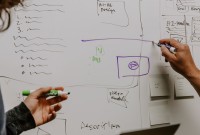- Home
- Business Processes
- Industry Knowledge
- Aerospace Industry
- Automotive Industry
- Banking Domain
- BFSI Industry
- Consumer/ FMCG Industry
- Chemicals Industry
- Engineering & Construction
- Energy Industry
- Education Domain
- Finance Domain
- Hospitality Domain
- Healthcare Industry
- Insurance Domain
- Retail Industry
- Travel and Tourism Domain
- Telecom Industry
- Leadership Skills
- eLearning
- Home
- Leadership Skills
- Leadership Theories
- Theories of Team Development
Theories of Team Development
The development of teams is an ongoing process because the composition of the team may keep on changing. The new members may join and the old members may leave the team. The team members pass through several stages for the development of the team and there has been a lot of research to identify these stages. In this article, we discuss the common theories of team development.
Team is formed as a result of interactions and influence of members who strive for the achievement of common goal. After the formation the teams take time to develop and usually follow some easily recognizable stages, as the team-members transition from being a group of strangers to becoming a unified integrated team chasing a common goal. In this process, the team members try to understand others behavior, realize the appropriateness of the behavior and the roles of the team members. A team is not formed merely by declaring some individuals as a team. A lot of research has been done on group formation and development, and different theories of group development have been suggested. Given below is a list of commonly known theories on team/group development:
- Bennis & Shepard, 1956;
- Bion, 1961;
- Gibb, 1964;
- Schutz, 1958, 1982;
- Tuckman, 1965;
- Tuckman & Jensen, 1977;
- Yalom, 1970;
- Tuckman, 1977;
- Kormanski & Mozenter, 1987;
Now we will discuss some popular theories on team development in detail:
Tuckman’s Five Stage Team Development Model:
Psychologist Bruce Tuckman first came up with the memorable phrase "forming, storming, norming, and performing" back in 1965. The “Forming – Storming – Norming – Performing” model of group development maintained that these phases are all necessary and inevitable in order for the team to grow, to face up to challenges, to tackle problems, to find solutions, to plan work, and to deliver results. This model has become the basis for subsequent models. He used it to describe the path to high-performance that most teams follow. Later, he added a fifth stage that he called "adjourning." Let us learn the five stages briefly:
Forming: This is the first stage of team development. In this stage the members try to explore and understand the behavior of the team members. They make their efforts in understanding the expectations of the team members. At this stage they are polite and try to find out how to fit into the team.
Storming: In the second stage, members start competing for status, leadership and control in the group. Individuals understand others behavior and assert their role in the group. As a result inter-personal conflict starts. Members try to resolve the issues related to the task and working relations. They also resolve the issues related to the role of the individual in the group.
Norming: The members start moving in a cohesive manner. They establish a balance among various conflicting forces. They develop group norms and consensus for the achievement of the group goal. At this stage, cooperative feelings develop among the team members.
Performing: In this stage, the team makes effort for the performance of task and accomplishment of objectives. The established pattern of relationships improves coordination and helps in resolving conflicts. Members trust each other and extend their full cooperation for the achievement of the group goal.
Adjourning: As you must be aware that the team is formed for some purpose. When this purpose is fulfilled, the team may be adjourned. Thus, the breaking up of the team is referred to adjournment.
Kormanski & Mozenter (1987) Stages of Team Development:
Kormanski & Mozenter (1987) integrated the various theories and suggested the following stages of team development. These stages are sequential (each stage is followed by the next one). Each stage has a task outcome and a relationships outcome. Kormanski and Mozenter have identified following stages of team development :
- Awareness
- Conflict
- Cooperation
- Productivity, and
- Separation
1. Awareness: At this stage individuals get to know each other. By knowing the goals of the team they commit themselves to the goals. The members get to know and accept to work together for a goal about which they have enough knowledge.
2. Conflict: At the first stage (awareness) the members know the team goals and accept to work together; but this is at the surface level. At the second stage they search and begin to ask questions. As a result several matters are clarified. They also fight with each and in this process of interaction resolve any hostilities they may have, resulting in the feeling of belonging to the group.
3. Cooperation: In the third stage the members own the team goals and get involved in those goals. Having resolved feelings, they also support each other.
4. Productivity: This is the stage of real achievement of the goals/outcomes, and the team members achieving these objectives feel proud of their achievement.
5. Separation: Having accomplished the goals or the outcomes, some task-specific teams may decide to get dissolved, or a time-bound time comes to a close. The excellent work done by the members is recognized, and the team members have a high sense of satisfaction of working with each other. This is the stage of closure of the team, or closure of one task on which the team was working.
The following table provides a summary of task outcomes and relationships outcomes at each stage as defined in the model:
|
A Model of Team Building |
|||
|
Stage |
Theme |
Task Outcome |
Relationship Outcome |
|
One |
Awareness |
Commitment |
Acceptance |
|
Two |
Conflict |
Clarification |
Belonging |
|
Three |
Cooperation |
Involvement |
Support |
|
Four |
Productivity |
Achievement |
Pride |
|
Five |
Separation |
Recognition |
Satisfaction |
Related Links
You May Also Like
-
Continuum of leadership is a leadership theory based on the relationship between the level of freedom given to the team and the level of authority used by the manager. The chosen leadership style will depend on multiple factors, including the leader's personality.
-
Hawthorne Studies - Leadership
The Hawthorne studies were conducted on workers at the Hawthorne plant of the Western Electric Company by Elton Mayo and Fritz Roethlisberger in the 1920s. This study established the behavioral change that happened due to an awareness of being observed, resulting in active compliance with the supposed wishes of researchers, because of special attention received, or positive response to the stimulus being introduced.
-
The multiple linkage model states that leadership effectiveness is based on six variables. Multiple variables of a leader's behavior and situation have a linkage to the performance of the individual follower and work unit performance. The theory is based on the notion of the link between the organization process and managerial influence.
-
Contingency Theories in Action
Contingency theory suggests matching the best leader to a specific situation based on situational factors and the leadership style. The practical application of theory can be done in various ways. The workplace example is to determine the best candidate for a given set of requirements using the LPC score. Applying the model to determine a leader's ability to adapt in the scenario of a new project etc..
-
Lewin’s Change Management Model
Lewin's change management model is a framework for managing organizational change. Lewin's methodology of different Leadership Styles recognizes three distinct stages of change - creating the perception; moving toward the new desired level of behavior and, ensuring new behavior as the norm.
-
McClelland's Theory of Needs is a human motivation theory which states that an individual's specific needs are acquired over time through our culture and life experiences. As per the three needs theory, these acquired needs significantly influence the behavior of an individual. The three main driving motivators are the needs for achievement, affiliation, and power.
-
There are four characteristics of leadership that help us to understand the character of leadership as a concept. 1. Leadership is a process, 2. Leadership involves influence, 3. Leadership always occurs in a group context and 4. Leadership involves goal attainment. These are the four components that make up the character of the 'leadership' term and help us to define the leadership concept. All of these components of leadership have common characteristics.
-
Burns Transformational Leadership Theory
Transformational leadership theory has been defined by James MacGregor Burns as a process where both leaders and followers mutually raise one another to higher levels of morality and motivation. The concept of transforming leader works with teams to garner trust, respect, and admiration while reaching to higher moral positions. The transformational theory of leadership was developed while studying political leaders and how they use charismatic methods to attract people to the values.
-
Humanistic theories of Leadership
Humanistic leadership is an ethical philosophic approach that recognizes the dignity and worth of each and every group or team member. This approach is based on building a leadership culture of trust, ethics, and empathy. Humanistic leadership is a set of principles founded on humanism with vision, mission, values, and expected behaviors. It is value-driven leadership based on principles such as humility, accountability, positivity, and love.
-
Leader-Participation Model provides a set of rules to determine the form and amount of participative decision making. It helps identifies different ways a decision can be made based on the degree of follower participation. It proposes a method for leaders to involve all members of the organization work together to make decisions.
Explore Our Free Training Articles or
Sign Up to Start With Our eLearning Courses

About Us
Learning
© 2023 TechnoFunc, All Rights Reserved










